- Date & Time: Wednesday, March 1, 2023; 1:00 PM
Speaker: Shaowu Pan, Rensselaer Polytechnic Institute
MERL Host: Saviz Mowlavi
Research Areas: Computational Sensing, Data Analytics, Machine Learning
Abstract 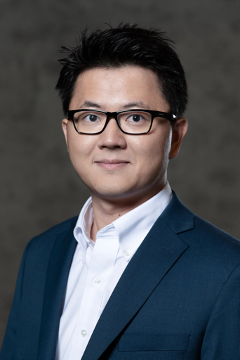 High-dimensional spatio-temporal dynamics can often be encoded in a low-dimensional subspace. Engineering applications for modeling, characterization, design, and control of such large-scale systems often rely on dimensionality reduction to make solutions computationally tractable in real-time. Common existing paradigms for dimensionality reduction include linear methods, such as the singular value decomposition (SVD), and nonlinear methods, such as variants of convolutional autoencoders (CAE). However, these encoding techniques lack the ability to efficiently represent the complexity associated with spatio-temporal data, which often requires variable geometry, non-uniform grid resolution, adaptive meshing, and/or parametric dependencies. To resolve these practical engineering challenges, we propose a general framework called Neural Implicit Flow (NIF) that enables a mesh-agnostic, low-rank representation of large-scale, parametric, spatial-temporal data. NIF consists of two modified multilayer perceptrons (MLPs): (i) ShapeNet, which isolates and represents the spatial complexity, and (ii) ParameterNet, which accounts for any other input complexity, including parametric dependencies, time, and sensor measurements. We demonstrate the utility of NIF for parametric surrogate modeling, enabling the interpretable representation and compression of complex spatio-temporal dynamics, efficient many-spatial-query tasks, and improved generalization performance for sparse reconstruction.
High-dimensional spatio-temporal dynamics can often be encoded in a low-dimensional subspace. Engineering applications for modeling, characterization, design, and control of such large-scale systems often rely on dimensionality reduction to make solutions computationally tractable in real-time. Common existing paradigms for dimensionality reduction include linear methods, such as the singular value decomposition (SVD), and nonlinear methods, such as variants of convolutional autoencoders (CAE). However, these encoding techniques lack the ability to efficiently represent the complexity associated with spatio-temporal data, which often requires variable geometry, non-uniform grid resolution, adaptive meshing, and/or parametric dependencies. To resolve these practical engineering challenges, we propose a general framework called Neural Implicit Flow (NIF) that enables a mesh-agnostic, low-rank representation of large-scale, parametric, spatial-temporal data. NIF consists of two modified multilayer perceptrons (MLPs): (i) ShapeNet, which isolates and represents the spatial complexity, and (ii) ParameterNet, which accounts for any other input complexity, including parametric dependencies, time, and sensor measurements. We demonstrate the utility of NIF for parametric surrogate modeling, enabling the interpretable representation and compression of complex spatio-temporal dynamics, efficient many-spatial-query tasks, and improved generalization performance for sparse reconstruction.
-
- Date & Time: Tuesday, February 28, 2023; 12:00 PM
Speaker: Prof. Kevin Lynch, Northwestern University
MERL Host: Diego Romeres
Research Areas: Machine Learning, Robotics
Abstract - Research at the Center for Robotics and Biosystems at Northwestern University includes bio-inspiration, neuromechanics, human-machine systems, and swarm robotics, among other topics. In this talk I will focus on our work on manipulation, including autonomous in-hand robotic manipulation and safe, intuitive human-collaborative manipulation among one or more humans and a team of mobile manipulators.
-
- Date & Time: Monday, December 12, 2022; 1:00pm-5:30pm ET
Location: Mitsubishi Electric Research Laboratories (MERL)/Virtual
Research Areas: Applied Physics, Artificial Intelligence, Communications, Computational Sensing, Computer Vision, Control, Data Analytics, Dynamical Systems, Electric Systems, Electronic and Photonic Devices, Machine Learning, Multi-Physical Modeling, Optimization, Robotics, Signal Processing, Speech & Audio, Digital Video
Brief - Join MERL's virtual open house on December 12th, 2022! Featuring a keynote, live sessions, research area booths, and opportunities to interact with our research team. Discover who we are and what we do, and learn about internship and employment opportunities.
-
- Date & Time: Tuesday, November 1, 2022; 1:00 PM
Speaker: Jiajun Wu, Stanford University
MERL Host: Anoop Cherian
Research Areas: Artificial Intelligence, Computer Vision, Machine Learning
Abstract 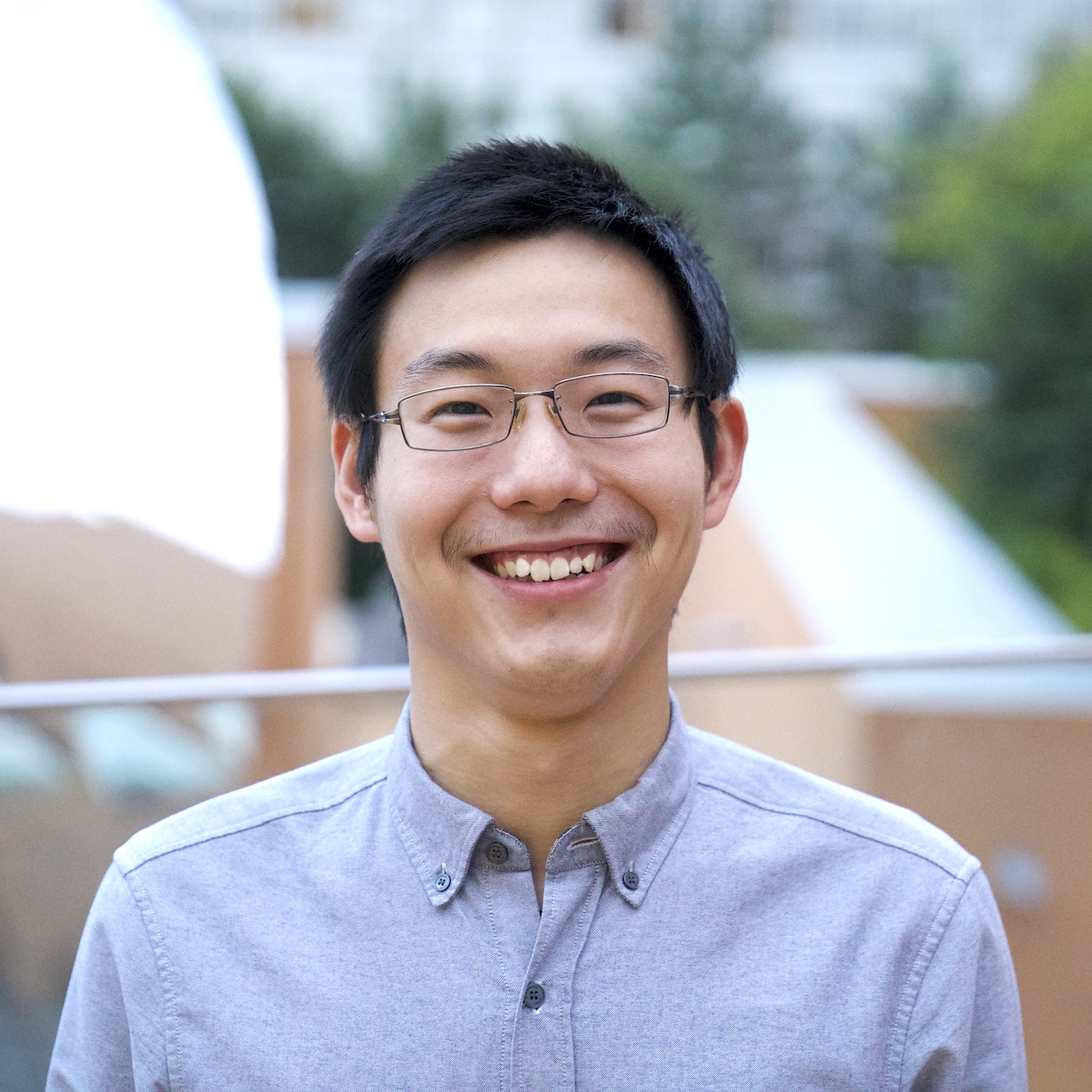 The visual world has its inherent structure: scenes are made of multiple identical objects; different objects may have the same color or material, with a regular layout; each object can be symmetric and have repetitive parts. How can we infer, represent, and use such structure from raw data, without hampering the expressiveness of neural networks? In this talk, I will demonstrate that such structure, or code, can be learned from natural supervision. Here, natural supervision can be from pixels, where neuro-symbolic methods automatically discover repetitive parts and objects for scene synthesis. It can also be from objects, where humans during fabrication introduce priors that can be leveraged by machines to infer regular intrinsics such as texture and material. When solving these problems, structured representations and neural nets play complementary roles: it is more data-efficient to learn with structured representations, and they generalize better to new scenarios with robustly captured high-level information; neural nets effectively extract complex, low-level features from cluttered and noisy visual data.
The visual world has its inherent structure: scenes are made of multiple identical objects; different objects may have the same color or material, with a regular layout; each object can be symmetric and have repetitive parts. How can we infer, represent, and use such structure from raw data, without hampering the expressiveness of neural networks? In this talk, I will demonstrate that such structure, or code, can be learned from natural supervision. Here, natural supervision can be from pixels, where neuro-symbolic methods automatically discover repetitive parts and objects for scene synthesis. It can also be from objects, where humans during fabrication introduce priors that can be leveraged by machines to infer regular intrinsics such as texture and material. When solving these problems, structured representations and neural nets play complementary roles: it is more data-efficient to learn with structured representations, and they generalize better to new scenarios with robustly captured high-level information; neural nets effectively extract complex, low-level features from cluttered and noisy visual data.
-
- Date & Time: Thursday, October 13, 2022; 1:30pm-2:30pm
Speaker: Prof. Shaoshuai Mou, Purdue University
MERL Host: Yebin Wang
Research Areas: Control, Machine Learning, Optimization
Abstract - Modern society has been relying more and more on engineering advance of autonomous systems, ranging from individual systems (such as a robotic arm for manufacturing, a self-driving car, or an autonomous vehicle for planetary exploration) to cooperative systems (such as a human-robot team, swarms of drones, etc). In this talk we will present our most recent progress in developing a fundamental framework for learning and control in autonomous systems. The framework comes from a differentiation of Pontryagin’s Maximum Principle and is able to provide a unified solution to three classes of learning/control tasks, i.e. adaptive autonomy, inverse optimization, and system identification. We will also present applications of this framework into human-autonomy teaming, especially in enabling an autonomous system to take guidance from human operators, which is usually sparse and vague.
-
- Date: Thursday, October 6, 2022
Location: Kendall Square, Cambridge, MA
MERL Contacts: Anoop Cherian; Jonathan Le Roux
Research Areas: Artificial Intelligence, Computer Vision, Machine Learning, Speech & Audio
Brief - SANE 2022, a one-day event gathering researchers and students in speech and audio from the Northeast of the American continent, was held on Thursday October 6, 2022 in Kendall Square, Cambridge, MA.
It was the 9th edition in the SANE series of workshops, which started in 2012 and was held every year alternately in Boston and New York until 2019. Since the first edition, the audience has grown to a record 200 participants and 45 posters in 2019. After a 2-year hiatus due to the pandemic, SANE returned with an in-person gathering of 140 students and researchers.
SANE 2022 featured invited talks by seven leading researchers from the Northeast: Rupal Patel (Northeastern/VocaliD), Wei-Ning Hsu (Meta FAIR), Scott Wisdom (Google), Tara Sainath (Google), Shinji Watanabe (CMU), Anoop Cherian (MERL), and Chuang Gan (UMass Amherst/MIT-IBM Watson AI Lab). It also featured a lively poster session with 29 posters.
SANE 2022 was co-organized by Jonathan Le Roux (MERL), Arnab Ghoshal (Apple), John Hershey (Google), and Shinji Watanabe (CMU). SANE remained a free event thanks to generous sponsorship by Bose, Google, MERL, and Microsoft.
Slides and videos of the talks will be released on the SANE workshop website.
-
- Date & Time: Tuesday, September 6, 2022; 12:00 PM EDT
Speaker: Chuang Gan, UMass Amherst & MIT-IBM Watson AI Lab
MERL Host: Jonathan Le Roux
Research Areas: Artificial Intelligence, Computer Vision, Machine Learning, Speech & Audio
Abstract 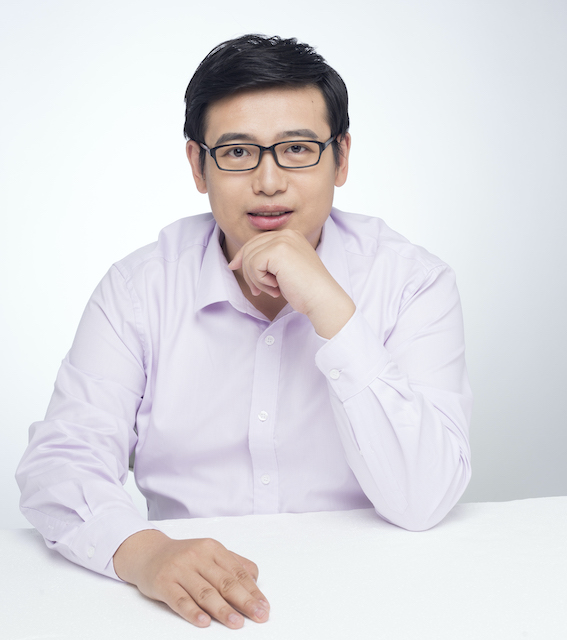 Human sensory perception of the physical world is rich and multimodal and can flexibly integrate input from all five sensory modalities -- vision, touch, smell, hearing, and taste. However, in AI, attention has primarily focused on visual perception. In this talk, I will introduce my efforts in connecting vision with sound, which will allow machine perception systems to see objects and infer physics from multi-sensory data. In the first part of my talk, I will introduce a. self-supervised approach that could learn to parse images and separate the sound sources by watching and listening to unlabeled videos without requiring additional manual supervision. In the second part of my talk, I will show we may further infer the underlying causal structure in 3D environments through visual and auditory observations. This enables agents to seek the sound source of repeating environmental sound (e.g., alarm) or identify what object has fallen, and where, from an intermittent impact sound.
Human sensory perception of the physical world is rich and multimodal and can flexibly integrate input from all five sensory modalities -- vision, touch, smell, hearing, and taste. However, in AI, attention has primarily focused on visual perception. In this talk, I will introduce my efforts in connecting vision with sound, which will allow machine perception systems to see objects and infer physics from multi-sensory data. In the first part of my talk, I will introduce a. self-supervised approach that could learn to parse images and separate the sound sources by watching and listening to unlabeled videos without requiring additional manual supervision. In the second part of my talk, I will show we may further infer the underlying causal structure in 3D environments through visual and auditory observations. This enables agents to seek the sound source of repeating environmental sound (e.g., alarm) or identify what object has fallen, and where, from an intermittent impact sound.
-
- Date & Time: Wednesday, March 30, 2022; 11:00 AM EDT
Speaker: Vincent Sitzmann, MIT
Research Areas: Artificial Intelligence, Computer Vision, Machine Learning
Abstract  Given only a single picture, people are capable of inferring a mental representation that encodes rich information about the underlying 3D scene. We acquire this skill not through massive labeled datasets of 3D scenes, but through self-supervised observation and interaction. Building machines that can infer similarly rich neural scene representations is critical if they are to one day parallel people’s ability to understand, navigate, and interact with their surroundings. This poses a unique set of challenges that sets neural scene representations apart from conventional representations of 3D scenes: Rendering and processing operations need to be differentiable, and the type of information they encode is unknown a priori, requiring them to be extraordinarily flexible. At the same time, training them without ground-truth 3D supervision is an underdetermined problem, highlighting the need for structure and inductive biases without which models converge to spurious explanations.
Given only a single picture, people are capable of inferring a mental representation that encodes rich information about the underlying 3D scene. We acquire this skill not through massive labeled datasets of 3D scenes, but through self-supervised observation and interaction. Building machines that can infer similarly rich neural scene representations is critical if they are to one day parallel people’s ability to understand, navigate, and interact with their surroundings. This poses a unique set of challenges that sets neural scene representations apart from conventional representations of 3D scenes: Rendering and processing operations need to be differentiable, and the type of information they encode is unknown a priori, requiring them to be extraordinarily flexible. At the same time, training them without ground-truth 3D supervision is an underdetermined problem, highlighting the need for structure and inductive biases without which models converge to spurious explanations.
I will demonstrate how we can equip neural networks with inductive biases that enables them to learn 3D geometry, appearance, and even semantic information, self-supervised only from posed images. I will show how this approach unlocks the learning of priors, enabling 3D reconstruction from only a single posed 2D image, and how we may extend these representations to other modalities such as sound. I will then discuss recent work on learning the neural rendering operator to make rendering and training fast, and how this speed-up enables us to learn object-centric neural scene representations, learning to decompose 3D scenes into objects, given only images. Finally, I will talk about a recent application of self-supervised scene representation learning in robotic manipulation, where it enables us to learn to manipulate classes of objects in unseen poses from only a handful of human demonstrations.
-
- Date & Time: Tuesday, March 1, 2022; 1:00 PM EST
Speaker: David Harwath, The University of Texas at Austin
MERL Host: Chiori Hori
Research Areas: Artificial Intelligence, Machine Learning, Speech & Audio
Abstract 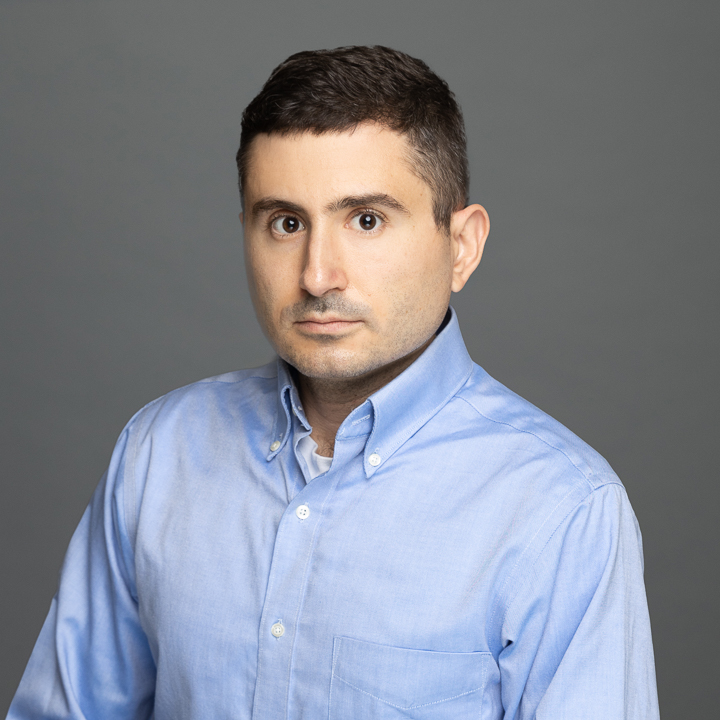 Humans learn spoken language and visual perception at an early age by being immersed in the world around them. Why can't computers do the same? In this talk, I will describe our ongoing work to develop methodologies for grounding continuous speech signals at the raw waveform level to natural image scenes. I will first present self-supervised models capable of discovering discrete, hierarchical structure (words and sub-word units) in the speech signal. Instead of conventional annotations, these models learn from correspondences between speech sounds and visual patterns such as objects and textures. Next, I will demonstrate how these discrete units can be used as a drop-in replacement for text transcriptions in an image captioning system, enabling us to directly synthesize spoken descriptions of images without the need for text as an intermediate representation. Finally, I will describe our latest work on Transformer-based models of visually-grounded speech. These models significantly outperform the prior state of the art on semantic speech-to-image retrieval tasks, and also learn representations that are useful for a multitude of other speech processing tasks.
Humans learn spoken language and visual perception at an early age by being immersed in the world around them. Why can't computers do the same? In this talk, I will describe our ongoing work to develop methodologies for grounding continuous speech signals at the raw waveform level to natural image scenes. I will first present self-supervised models capable of discovering discrete, hierarchical structure (words and sub-word units) in the speech signal. Instead of conventional annotations, these models learn from correspondences between speech sounds and visual patterns such as objects and textures. Next, I will demonstrate how these discrete units can be used as a drop-in replacement for text transcriptions in an image captioning system, enabling us to directly synthesize spoken descriptions of images without the need for text as an intermediate representation. Finally, I will describe our latest work on Transformer-based models of visually-grounded speech. These models significantly outperform the prior state of the art on semantic speech-to-image retrieval tasks, and also learn representations that are useful for a multitude of other speech processing tasks.
-
- Date & Time: Tuesday, December 14, 2021; 1:00 PM EST
Speaker: Prof. Chris Fletcher, University of Waterloo
MERL Host: Ankush Chakrabarty
Research Areas: Dynamical Systems, Machine Learning, Multi-Physical Modeling
Abstract 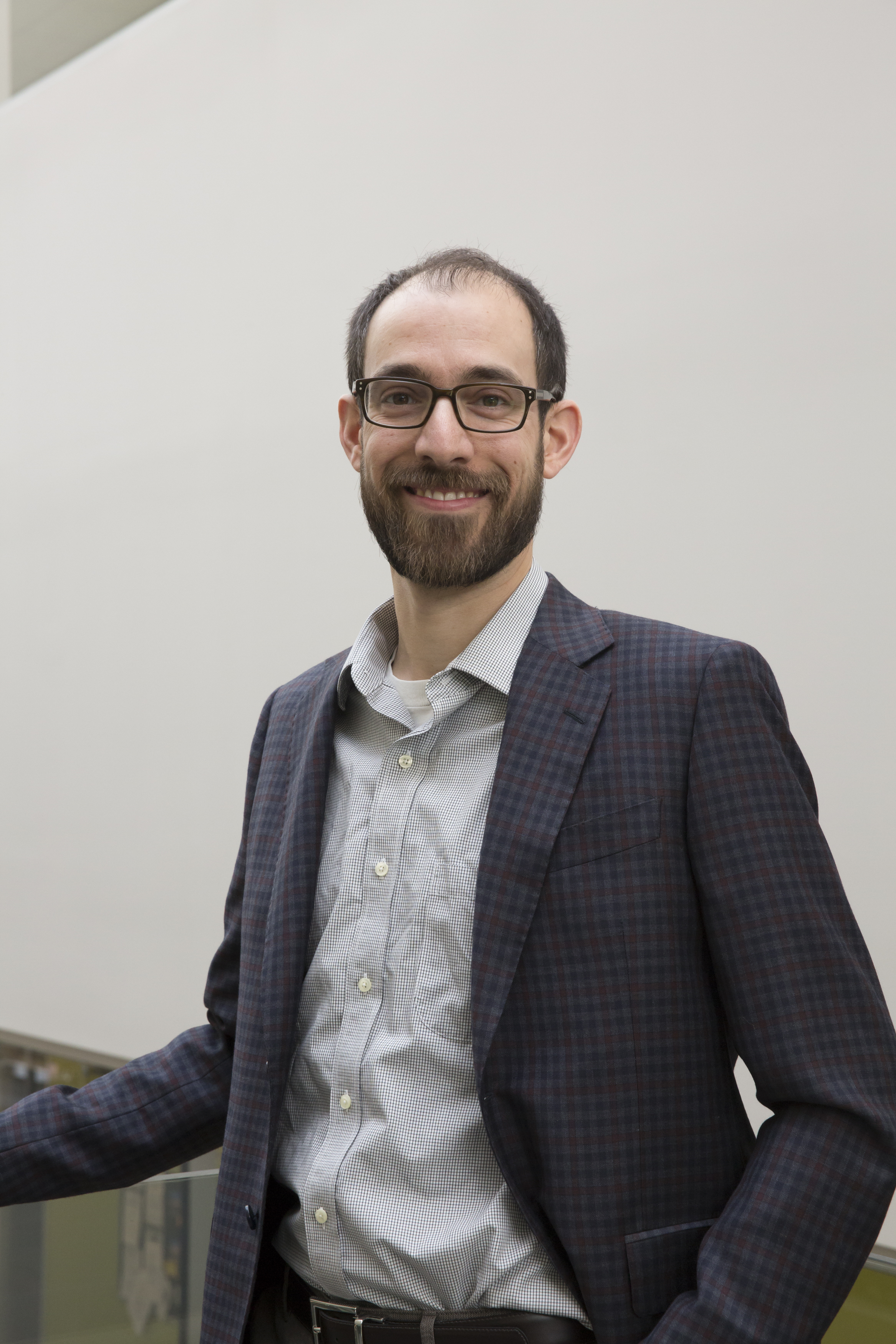 Decision-making and adaptation to climate change requires quantitative projections of the physical climate system and an accurate understanding of the uncertainty in those projections. Earth system models (ESMs), which solve the Navier-Stokes equations on the sphere, are the only tool that climate scientists have to make projections forward into climate states that have not been observed in the historical data record. Yet, ESMs are incredibly complex and expensive codes and contain many poorly constrained physical parameters—for processes such as clouds and convection—that must be calibrated against observations. In this talk, I will describe research from my group that uses ensembles of ESM simulations to train statistical models that learn the behavior and sensitivities of the ESM. Once trained and validated the statistical models are essentially free to run, which allows climate modelling centers to make more efficient use of precious compute cycles. The aim is to improve the quality of future climate projections, by producing better calibrated ESMs, and to improve the quantification of the uncertainties, by better sampling the equifinality of climate states.
Decision-making and adaptation to climate change requires quantitative projections of the physical climate system and an accurate understanding of the uncertainty in those projections. Earth system models (ESMs), which solve the Navier-Stokes equations on the sphere, are the only tool that climate scientists have to make projections forward into climate states that have not been observed in the historical data record. Yet, ESMs are incredibly complex and expensive codes and contain many poorly constrained physical parameters—for processes such as clouds and convection—that must be calibrated against observations. In this talk, I will describe research from my group that uses ensembles of ESM simulations to train statistical models that learn the behavior and sensitivities of the ESM. Once trained and validated the statistical models are essentially free to run, which allows climate modelling centers to make more efficient use of precious compute cycles. The aim is to improve the quality of future climate projections, by producing better calibrated ESMs, and to improve the quantification of the uncertainties, by better sampling the equifinality of climate states.
-
- Date & Time: Thursday, December 9, 2021; 1:00pm - 5:30pm EST
Location: Virtual Event
Speaker: Prof. Melanie Zeilinger, ETH
Research Areas: Applied Physics, Artificial Intelligence, Communications, Computational Sensing, Computer Vision, Control, Data Analytics, Dynamical Systems, Electric Systems, Electronic and Photonic Devices, Machine Learning, Multi-Physical Modeling, Optimization, Robotics, Signal Processing, Speech & Audio, Digital Video, Human-Computer Interaction, Information Security
Brief - MERL is excited to announce the second keynote speaker for our Virtual Open House 2021:
Prof. Melanie Zeilinger from ETH .
Our virtual open house will take place on December 9, 2021, 1:00pm - 5:30pm (EST).
Join us to learn more about who we are, what we do, and discuss our internship and employment opportunities. Prof. Zeilinger's talk is scheduled for 3:15pm - 3:45pm (EST).
Registration: https://mailchi.mp/merl/merlvoh2021
Keynote Title: Control Meets Learning - On Performance, Safety and User Interaction
Abstract: With increasing sensing and communication capabilities, physical systems today are becoming one of the largest generators of data, making learning a central component of autonomous control systems. While this paradigm shift offers tremendous opportunities to address new levels of system complexity, variability and user interaction, it also raises fundamental questions of learning in a closed-loop dynamical control system. In this talk, I will present some of our recent results showing how even safety-critical systems can leverage the potential of data. I will first briefly present concepts for using learning for automatic controller design and for a new safety framework that can equip any learning-based controller with safety guarantees. The second part will then discuss how expert and user information can be utilized to optimize system performance, where I will particularly highlight an approach developed together with MERL for personalizing the motion planning in autonomous driving to the individual driving style of a passenger.
-
- Date & Time: Thursday, December 9, 2021; 1:00pm - 5:30pm EST
Location: Virtual Event
Speaker: Prof. Ashok Veeraraghavan, Rice University
Research Areas: Applied Physics, Artificial Intelligence, Communications, Computational Sensing, Computer Vision, Control, Data Analytics, Dynamical Systems, Electric Systems, Electronic and Photonic Devices, Machine Learning, Multi-Physical Modeling, Optimization, Robotics, Signal Processing, Speech & Audio, Digital Video, Human-Computer Interaction, Information Security
Brief - MERL is excited to announce the first keynote speaker for our Virtual Open House 2021:
Prof. Ashok Veeraraghavan from Rice University.
Our virtual open house will take place on December 9, 2021, 1:00pm - 5:30pm (EST).
Join us to learn more about who we are, what we do, and discuss our internship and employment opportunities. Prof. Veeraraghavan's talk is scheduled for 1:15pm - 1:45pm (EST).
Registration: https://mailchi.mp/merl/merlvoh2021
Keynote Title: Computational Imaging: Beyond the limits imposed by lenses.
Abstract: The lens has long been a central element of cameras, since its early use in the mid-nineteenth century by Niepce, Talbot, and Daguerre. The role of the lens, from the Daguerrotype to modern digital cameras, is to refract light to achieve a one-to-one mapping between a point in the scene and a point on the sensor. This effect enables the sensor to compute a particular two-dimensional (2D) integral of the incident 4D light-field. We propose a radical departure from this practice and the many limitations it imposes. In the talk we focus on two inter-related research projects that attempt to go beyond lens-based imaging.
First, we discuss our lab’s recent efforts to build flat, extremely thin imaging devices by replacing the lens in a conventional camera with an amplitude mask and computational reconstruction algorithms. These lensless cameras, called FlatCams can be less than a millimeter in thickness and enable applications where size, weight, thickness or cost are the driving factors. Second, we discuss high-resolution, long-distance imaging using Fourier Ptychography, where the need for a large aperture aberration corrected lens is replaced by a camera array and associated phase retrieval algorithms resulting again in order of magnitude reductions in size, weight and cost. Finally, I will spend a few minutes discussing how the wholistic computational imaging approach can be used to create ultra-high-resolution wavefront sensors.
-
- Date & Time: Tuesday, November 16, 2021; 11:00 AM EST
Speaker: Thomas Schön, Uppsala University
Research Areas: Dynamical Systems, Machine Learning
Abstract 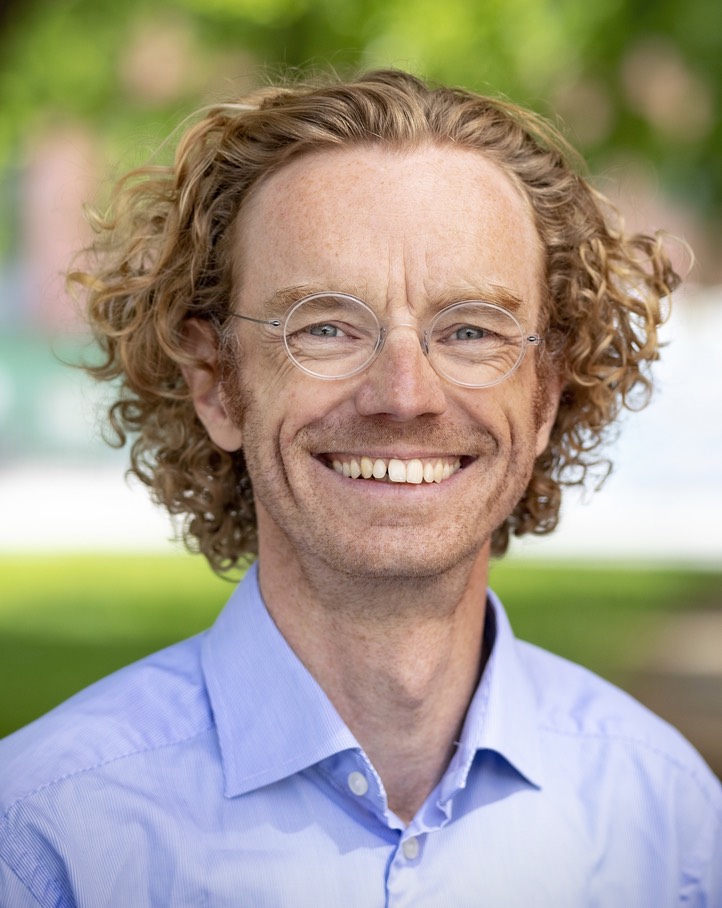 While deep learning-based classification is generally addressed using standardized approaches, this is really not the case when it comes to the study of regression problems. There are currently several different approaches used for regression and there is still room for innovation. We have developed a general deep regression method with a clear probabilistic interpretation. The basic building block in our construction is an energy-based model of the conditional output density p(y|x), where we use a deep neural network to predict the un-normalized density from input-output pairs (x, y). Such a construction is also commonly referred to as an implicit representation. The resulting learning problem is challenging and we offer some insights on how to deal with it. We show good performance on several computer vision regression tasks, system identification problems and 3D object detection using laser data.
While deep learning-based classification is generally addressed using standardized approaches, this is really not the case when it comes to the study of regression problems. There are currently several different approaches used for regression and there is still room for innovation. We have developed a general deep regression method with a clear probabilistic interpretation. The basic building block in our construction is an energy-based model of the conditional output density p(y|x), where we use a deep neural network to predict the un-normalized density from input-output pairs (x, y). Such a construction is also commonly referred to as an implicit representation. The resulting learning problem is challenging and we offer some insights on how to deal with it. We show good performance on several computer vision regression tasks, system identification problems and 3D object detection using laser data.
-
- Date & Time: Thursday, December 9, 2021; 100pm-5:30pm (EST)
Location: Virtual Event
Research Areas: Applied Physics, Artificial Intelligence, Communications, Computational Sensing, Computer Vision, Control, Data Analytics, Dynamical Systems, Electric Systems, Electronic and Photonic Devices, Machine Learning, Multi-Physical Modeling, Optimization, Robotics, Signal Processing, Speech & Audio, Digital Video, Human-Computer Interaction, Information Security
Brief - Mitsubishi Electric Research Laboratories cordially invites you to join our Virtual Open House, on December 9, 2021, 1:00pm - 5:30pm (EST).
The event will feature keynotes, live sessions, research area booths, and time for open interactions with our researchers. Join us to learn more about who we are, what we do, and discuss our internship and employment opportunities.
Registration: https://mailchi.mp/merl/merlvoh2021
-
- Date & Time: Tuesday, November 2, 2021; 1:00 PM EST
Speaker: Dr. Hsiao-Yu (Fish) Tung, MIT BCS
Research Areas: Artificial Intelligence, Computer Vision, Machine Learning, Robotics
Abstract 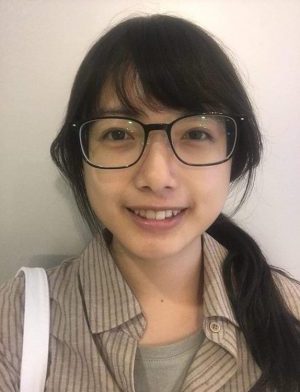 Current state-of-the-art CNNs can localize and name objects in internet photos, yet, they miss the basic knowledge that a two-year-old toddler has possessed: objects persist over time despite changes in the observer’s viewpoint or during cross-object occlusions; objects have 3D extent; solid objects do not pass through each other. In this talk, I will introduce neural architectures that learn to parse video streams of a static scene into world-centric 3D feature maps by disentangling camera motion from scene appearance. I will show the proposed architectures learn object permanence, can imagine RGB views from novel viewpoints in truly novel scenes, can conduct basic spatial reasoning and planning, can infer affordability in sentences, and can learn geometry-aware 3D concepts that allow pose-aware object recognition to happen with weak/sparse labels. Our experiments suggest that the proposed architectures are essential for the models to generalize across objects and locations, and it overcomes many limitations of 2D CNNs. I will show how we can use the proposed 3D representations to build machine perception and physical understanding more close to humans.
Current state-of-the-art CNNs can localize and name objects in internet photos, yet, they miss the basic knowledge that a two-year-old toddler has possessed: objects persist over time despite changes in the observer’s viewpoint or during cross-object occlusions; objects have 3D extent; solid objects do not pass through each other. In this talk, I will introduce neural architectures that learn to parse video streams of a static scene into world-centric 3D feature maps by disentangling camera motion from scene appearance. I will show the proposed architectures learn object permanence, can imagine RGB views from novel viewpoints in truly novel scenes, can conduct basic spatial reasoning and planning, can infer affordability in sentences, and can learn geometry-aware 3D concepts that allow pose-aware object recognition to happen with weak/sparse labels. Our experiments suggest that the proposed architectures are essential for the models to generalize across objects and locations, and it overcomes many limitations of 2D CNNs. I will show how we can use the proposed 3D representations to build machine perception and physical understanding more close to humans.
-
- Date & Time: Tuesday, October 12, 2021; 1:00 PM EST
Speaker: Prof. Greg Ongie, Marquette University
MERL Host: Hassan Mansour
Research Areas: Computational Sensing, Machine Learning, Signal Processing
Abstract 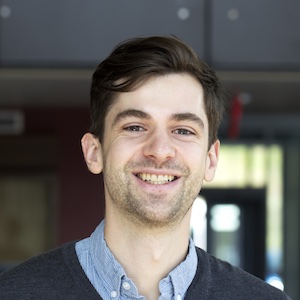 Deep learning is emerging as powerful tool to solve challenging inverse problems in computational imaging, including basic image restoration tasks like denoising and deblurring, as well as image reconstruction problems in medical imaging. This talk will give an overview of the state-of-the-art supervised learning techniques in this area and discuss two recent innovations: deep equilibrium architectures, which allows one to train an effectively infinite-depth reconstruction network; and model adaptation methods, that allow one to adapt a pre-trained reconstruction network to changes in the imaging forward model at test time.
Deep learning is emerging as powerful tool to solve challenging inverse problems in computational imaging, including basic image restoration tasks like denoising and deblurring, as well as image reconstruction problems in medical imaging. This talk will give an overview of the state-of-the-art supervised learning techniques in this area and discuss two recent innovations: deep equilibrium architectures, which allows one to train an effectively infinite-depth reconstruction network; and model adaptation methods, that allow one to adapt a pre-trained reconstruction network to changes in the imaging forward model at test time.
-
- Date & Time: Tuesday, September 28, 2021; 1:00 PM EST
Speaker: Dr. Ruohan Gao, Stanford University
MERL Host: Gordon Wichern
Research Areas: Computer Vision, Machine Learning, Speech & Audio
Abstract  While computer vision has made significant progress by "looking" — detecting objects, actions, or people based on their appearance — it often does not listen. Yet cognitive science tells us that perception develops by making use of all our senses without intensive supervision. Towards this goal, in this talk I will present my research on audio-visual learning — We disentangle object sounds from unlabeled video, use audio as an efficient preview for action recognition in untrimmed video, decode the monaural soundtrack into its binaural counterpart by injecting visual spatial information, and use echoes to interact with the environment for spatial image representation learning. Together, these are steps towards multimodal understanding of the visual world, where audio serves as both the semantic and spatial signals. In the end, I will also briefly talk about our latest work on multisensory learning for robotics.
While computer vision has made significant progress by "looking" — detecting objects, actions, or people based on their appearance — it often does not listen. Yet cognitive science tells us that perception develops by making use of all our senses without intensive supervision. Towards this goal, in this talk I will present my research on audio-visual learning — We disentangle object sounds from unlabeled video, use audio as an efficient preview for action recognition in untrimmed video, decode the monaural soundtrack into its binaural counterpart by injecting visual spatial information, and use echoes to interact with the environment for spatial image representation learning. Together, these are steps towards multimodal understanding of the visual world, where audio serves as both the semantic and spatial signals. In the end, I will also briefly talk about our latest work on multisensory learning for robotics.
-
- Date & Time: Tuesday, September 14, 2021; 1:00 PM EST
Speaker: Prof. David Bergman, University of Connecticut
MERL Host: Arvind Raghunathan
Research Areas: Data Analytics, Machine Learning, Optimization
Abstract 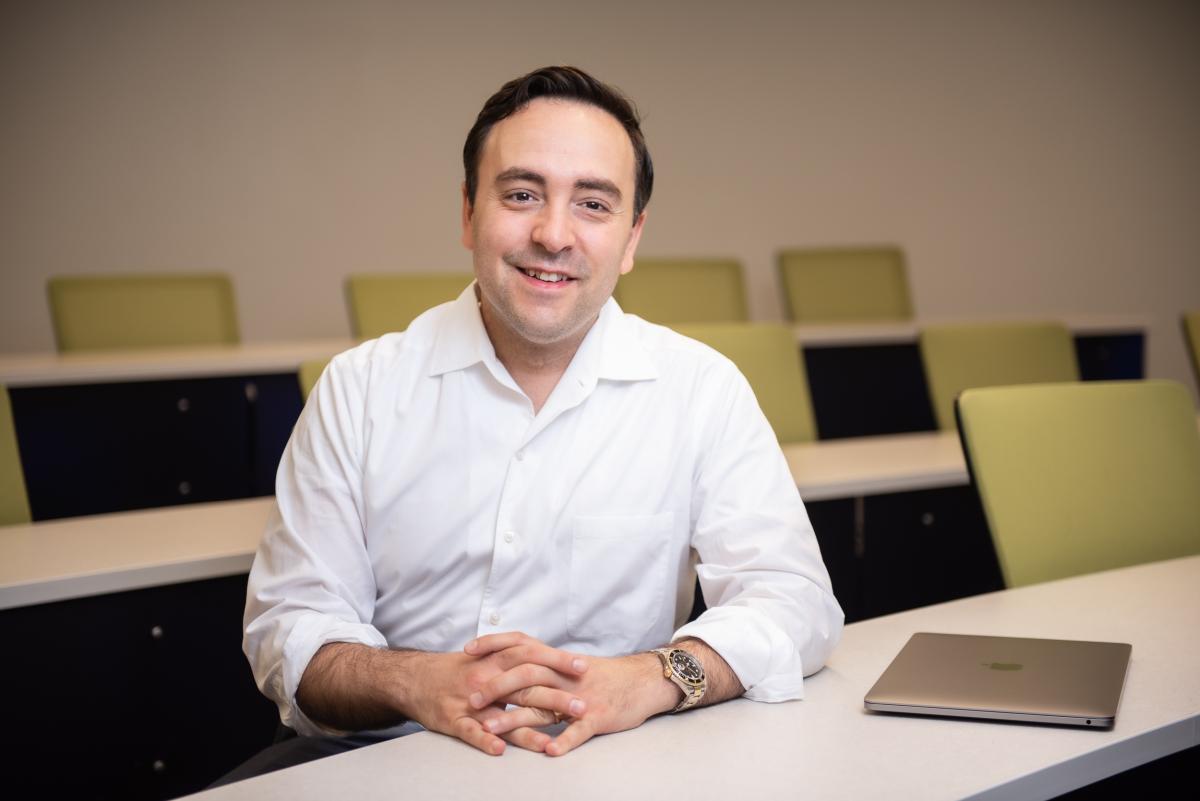 The integration of machine learning and optimization opens the door to new modeling paradigms that have already proven successful across a broad range of industries. Sports betting is a particularly exciting application area, where recent advances in both analytics and optimization can provide a lucrative edge. In this talk we will discuss three algorithmic sports betting games where combinations of machine learning and optimization have netted me significant winnings.
The integration of machine learning and optimization opens the door to new modeling paradigms that have already proven successful across a broad range of industries. Sports betting is a particularly exciting application area, where recent advances in both analytics and optimization can provide a lucrative edge. In this talk we will discuss three algorithmic sports betting games where combinations of machine learning and optimization have netted me significant winnings.
-
- Date & Time: Tuesday, February 16, 2021; 11:00-12:00
Speaker: Prof. Pere Gilabert, Universitat Politecnica de Catalunya, Barcelona, Spain
Research Areas: Communications, Electronic and Photonic Devices, Machine Learning, Signal Processing
Abstract - Digital predistortion (DPD) linearization is the most common and spread solution to cope with power amplifiers (PA) inherent linearity versus efficiency trade-off. The use of new radio 5G spectrally efficient signals with high peak-to-average power ratios (PAPR) occupying wider bandwidths only aggravates such compromise. When considering wide bandwidth signals, carrier aggregation or multi-band configurations in high efficient transmitter architectures, such as Doherty PAs, load-modulated balanced amplifiers, envelope tracking PAs or outphasing transmitters, the number of parameters required in the DPD model to compensate for both nonlinearities and memory effects can be unacceptably high. This has a negative impact in the DPD model extraction/adaptation, because it increases the computational complexity and drives to over-fitting and uncertainty.
This talk will discuss the use of machine learning techniques for DPD linearization. The use of artificial neural networks (ANNs) for adaptive DPD linearization and approaches to reduce the coefficients adaptation time will be discussed. In addition, an overview on several feature-extraction techniques used to reduce the number of parameters of the DPD linearization system as well as to ensure proper, well-conditioned estimation for related variables will be presented.
-
- Date & Time: Wednesday, December 9, 2020; 1:00-5:00PM EST
Location: Virtual
MERL Contacts: Elizabeth Phillips; Anthony Vetro
Research Areas: Applied Physics, Artificial Intelligence, Communications, Computational Sensing, Computer Vision, Control, Data Analytics, Dynamical Systems, Electric Systems, Electronic and Photonic Devices, Machine Learning, Multi-Physical Modeling, Optimization, Robotics, Signal Processing, Speech & Audio
-
- Date & Time: Tuesday, July 14, 2020; 11:00 AM
Speaker: Hanrui Wang, MIT
Research Areas: Electronic and Photonic Devices, Machine Learning
Abstract - Automatic transistor sizing is a challenging problem in circuit design due to the large design space, complex performance trade-offs, and fast technological advancements. Although there has been plenty of work on transistor sizing targeting on one circuit, limited research has been done on transferring the knowledge from one circuit to another to reduce the re-design overhead. In this work, we present GCN-RL Circuit Designer, leveraging reinforcement learning (RL) to transfer the knowledge between different technology nodes and topologies. Moreover, inspired by the simple fact that circuit is a graph, we learn on the circuit topology representation with graph convolutional neural networks (GCN). The GCN-RL agent extracts features of the topology graph whose vertices are transistors, edges are wires. Our learning-based optimization consistently achieves the highest Figures of Merit (FoM) on four different circuits compared with conventional black-box optimization methods (Bayesian Optimization, Evolutionary Algorithms), random search, and human expert designs. Experiments on transfer learning between five technology nodes and two circuit topologies demonstrate that RL with transfer learning can achieve much higher FoMs than methods without knowledge transfer. Our transferable optimization method makes transistor sizing and design porting more effective and efficient. The work is accepted to DAC 2020.
-
- Date & Time: Thursday, May 7, 2020; 11:00 AM
Speaker: Prof. Petar Popovski, Aalborg University, Denmark
MERL Host: Toshiaki Koike-Akino
Research Areas: Artificial Intelligence, Communications, Machine Learning, Signal Processing, Information Security
Abstract  The wireless landscape evolves towards supporting a large population of connections for humans and machines with very diverse features and requirements. Perhaps the main motivation of 5G wireless systems is its flexibility to support heterogeneous connectivity requirements: enhanced mobile broadband (eMBB), massive machine-type communications (mMTC), and ultra-reliable low-latency communications (URLLC). However, this classification is rather limited and is currently undergoing a revision within the research community. The first part of this talk will discuss how this heterogeneity can be revised and which opportunities it opens with respect to spectrum usage. The second part of the talk will deal with performance guarantees of wireless services and, specifically, ultra-reliable communication and outline the importance of machine learning in that context. The final part of the talk will provide a broader view on the evolution of wireless connectivity, including aspects that are implied by the resistance to the deployment of 5G, but also the new opportunities that can transform the way we build and utilize connected systems.
The wireless landscape evolves towards supporting a large population of connections for humans and machines with very diverse features and requirements. Perhaps the main motivation of 5G wireless systems is its flexibility to support heterogeneous connectivity requirements: enhanced mobile broadband (eMBB), massive machine-type communications (mMTC), and ultra-reliable low-latency communications (URLLC). However, this classification is rather limited and is currently undergoing a revision within the research community. The first part of this talk will discuss how this heterogeneity can be revised and which opportunities it opens with respect to spectrum usage. The second part of the talk will deal with performance guarantees of wireless services and, specifically, ultra-reliable communication and outline the importance of machine learning in that context. The final part of the talk will provide a broader view on the evolution of wireless connectivity, including aspects that are implied by the resistance to the deployment of 5G, but also the new opportunities that can transform the way we build and utilize connected systems.
-
- Date & Time: Thursday, May 7, 2020; 12:00 PM
Speaker: Christopher Rackauckas, MIT
MERL Host: Christopher R. Laughman
Research Areas: Machine Learning, Multi-Physical Modeling, Optimization
Abstract - In the context of science, the well-known adage "a picture is worth a thousand words" might well be "a model is worth a thousand datasets." Scientific models, such as Newtonian physics or biological gene regulatory networks, are human-driven simplifications of complex phenomena that serve as surrogates for the countless experiments that validated the models. Recently, machine learning has been able to overcome the inaccuracies of approximate modeling by directly learning the entire set of nonlinear interactions from data. However, without any predetermined structure from the scientific basis behind the problem, machine learning approaches are flexible but data-expensive, requiring large databases of homogeneous labeled training data. A central challenge is reco nciling data that is at odds with simplified models without requiring "big data". In this talk we discuss a new methodology, universal differential equations (UDEs), which augment scientific models with machine-learnable structures for scientifically-based learning. We show how UDEs can be utilized to discover previously unknown governing equations, accurately extrapolate beyond the original data, and accelerate model simulation, all in a time and data-efficient manner. This advance is coupled with open-source software that allows for training UDEs which incorporate physical constraints, delayed interactions, implicitly-defined events, and intrinsic stochasticity in the model. Our examples show how a diverse set of computationally-difficult modeling issues across scientific disciplines, from automatically discovering biological mechanisms to accelerating climate simulations by 15,000x, can be handled by training UDEs.
-
- Date: Thursday, October 24, 2019
Location: Columbia University, New York, NY
MERL Contact: Jonathan Le Roux
Research Areas: Artificial Intelligence, Machine Learning, Speech & Audio
Brief - SANE 2019, a one-day event gathering researchers and students in speech and audio from the Northeast of the American continent, was held on Thursday October 24, 2019 at Columbia University, in New York City.
It was the 8th edition in the SANE series of workshops, which started in 2012 and has been held every year alternately in Boston and New York. Since the first edition, the audience has steadily grown, with a previous record of 180 participants in 2017 and 2018, and a new record of 200 participants and 45 posters in 2019.
This year's SANE conveniently took place in conjunction both with the WASPAA workshop, held October 20-23 in upstate New York, and with the DCASE workshop, held October 25-26 in Brooklyn, NY, for a full week of speech and audio enlightenment and delight.
SANE 2019 featured invited talks by seven leading researchers from the Northeast as well as from the international community: Brian Kingsbury (IBM TJ Watson Research Center), Kristen Grauman (University of Texas at Austin, Facebook AI Research), Simon Doclo (University of Oldenburg), Karen Livescu (TTI-Chicago), Gabriel Synnaeve (Facebook AI Research), Hirokazu Kameoka (NTT Communication Science Laboratories), Ron Weiss (Google Brain). It also featured live demonstrations by Jonathan Le Roux (MERL) and Andrew Titus (Apple), and a lively poster session with 45 posters in Columbia University's Low Memorial Library, a National Historic Landmark.
SANE 2019 was co-organized by Jonathan Le Roux (MERL), Nima Mesgarani (Columbia), John R. Hershey (Google), Shinji Watanabe (Johns Hopkins), and Steven J. Rennie (Pryon Inc.). SANE remained a free event thanks to generous sponsorship by Columbia University, MERL, Google, Apple, and Amazon.
Slides and videos of the talks are available from the SANE workshop website.
-
- Date & Time: Tuesday, July 16, 2019; 12:00 PM
Speaker: Prof. Jeff Linderoth, University of Wisconsin-Madison
MERL Host: Arvind Raghunathan
Research Areas: Machine Learning, Optimization
Abstract  Algorithms to solve mixed integer linear programs have made incredible progress in the past 20 years. Key to these advances has been a mathematical analysis of the structure of the set of feasible solutions. We argue that a similar analysis is required in the case of mixed integer quadratic programs, like those that arise in sparse optimization in machine learning. One such analysis leads to the so-called perspective relaxation, which significantly improves solution performance on separable instances. Extensions of the perspective reformulation can lead to algorithms that are equivalent to some of the most popular, modern, sparsity-inducing non-convex regularizations in variable selection. Based on joint work with Hongbo Dong (Washington State Univ. ), Oktay Gunluk (IBM), and Kun Chen (Univ. Connecticut).
Algorithms to solve mixed integer linear programs have made incredible progress in the past 20 years. Key to these advances has been a mathematical analysis of the structure of the set of feasible solutions. We argue that a similar analysis is required in the case of mixed integer quadratic programs, like those that arise in sparse optimization in machine learning. One such analysis leads to the so-called perspective relaxation, which significantly improves solution performance on separable instances. Extensions of the perspective reformulation can lead to algorithms that are equivalent to some of the most popular, modern, sparsity-inducing non-convex regularizations in variable selection. Based on joint work with Hongbo Dong (Washington State Univ. ), Oktay Gunluk (IBM), and Kun Chen (Univ. Connecticut).
-
 High-dimensional spatio-temporal dynamics can often be encoded in a low-dimensional subspace. Engineering applications for modeling, characterization, design, and control of such large-scale systems often rely on dimensionality reduction to make solutions computationally tractable in real-time. Common existing paradigms for dimensionality reduction include linear methods, such as the singular value decomposition (SVD), and nonlinear methods, such as variants of convolutional autoencoders (CAE). However, these encoding techniques lack the ability to efficiently represent the complexity associated with spatio-temporal data, which often requires variable geometry, non-uniform grid resolution, adaptive meshing, and/or parametric dependencies. To resolve these practical engineering challenges, we propose a general framework called Neural Implicit Flow (NIF) that enables a mesh-agnostic, low-rank representation of large-scale, parametric, spatial-temporal data. NIF consists of two modified multilayer perceptrons (MLPs): (i) ShapeNet, which isolates and represents the spatial complexity, and (ii) ParameterNet, which accounts for any other input complexity, including parametric dependencies, time, and sensor measurements. We demonstrate the utility of NIF for parametric surrogate modeling, enabling the interpretable representation and compression of complex spatio-temporal dynamics, efficient many-spatial-query tasks, and improved generalization performance for sparse reconstruction.
High-dimensional spatio-temporal dynamics can often be encoded in a low-dimensional subspace. Engineering applications for modeling, characterization, design, and control of such large-scale systems often rely on dimensionality reduction to make solutions computationally tractable in real-time. Common existing paradigms for dimensionality reduction include linear methods, such as the singular value decomposition (SVD), and nonlinear methods, such as variants of convolutional autoencoders (CAE). However, these encoding techniques lack the ability to efficiently represent the complexity associated with spatio-temporal data, which often requires variable geometry, non-uniform grid resolution, adaptive meshing, and/or parametric dependencies. To resolve these practical engineering challenges, we propose a general framework called Neural Implicit Flow (NIF) that enables a mesh-agnostic, low-rank representation of large-scale, parametric, spatial-temporal data. NIF consists of two modified multilayer perceptrons (MLPs): (i) ShapeNet, which isolates and represents the spatial complexity, and (ii) ParameterNet, which accounts for any other input complexity, including parametric dependencies, time, and sensor measurements. We demonstrate the utility of NIF for parametric surrogate modeling, enabling the interpretable representation and compression of complex spatio-temporal dynamics, efficient many-spatial-query tasks, and improved generalization performance for sparse reconstruction. The visual world has its inherent structure: scenes are made of multiple identical objects; different objects may have the same color or material, with a regular layout; each object can be symmetric and have repetitive parts. How can we infer, represent, and use such structure from raw data, without hampering the expressiveness of neural networks? In this talk, I will demonstrate that such structure, or code, can be learned from natural supervision. Here, natural supervision can be from pixels, where neuro-symbolic methods automatically discover repetitive parts and objects for scene synthesis. It can also be from objects, where humans during fabrication introduce priors that can be leveraged by machines to infer regular intrinsics such as texture and material. When solving these problems, structured representations and neural nets play complementary roles: it is more data-efficient to learn with structured representations, and they generalize better to new scenarios with robustly captured high-level information; neural nets effectively extract complex, low-level features from cluttered and noisy visual data.
The visual world has its inherent structure: scenes are made of multiple identical objects; different objects may have the same color or material, with a regular layout; each object can be symmetric and have repetitive parts. How can we infer, represent, and use such structure from raw data, without hampering the expressiveness of neural networks? In this talk, I will demonstrate that such structure, or code, can be learned from natural supervision. Here, natural supervision can be from pixels, where neuro-symbolic methods automatically discover repetitive parts and objects for scene synthesis. It can also be from objects, where humans during fabrication introduce priors that can be leveraged by machines to infer regular intrinsics such as texture and material. When solving these problems, structured representations and neural nets play complementary roles: it is more data-efficient to learn with structured representations, and they generalize better to new scenarios with robustly captured high-level information; neural nets effectively extract complex, low-level features from cluttered and noisy visual data. Human sensory perception of the physical world is rich and multimodal and can flexibly integrate input from all five sensory modalities -- vision, touch, smell, hearing, and taste. However, in AI, attention has primarily focused on visual perception. In this talk, I will introduce my efforts in connecting vision with sound, which will allow machine perception systems to see objects and infer physics from multi-sensory data. In the first part of my talk, I will introduce a. self-supervised approach that could learn to parse images and separate the sound sources by watching and listening to unlabeled videos without requiring additional manual supervision. In the second part of my talk, I will show we may further infer the underlying causal structure in 3D environments through visual and auditory observations. This enables agents to seek the sound source of repeating environmental sound (e.g., alarm) or identify what object has fallen, and where, from an intermittent impact sound.
Human sensory perception of the physical world is rich and multimodal and can flexibly integrate input from all five sensory modalities -- vision, touch, smell, hearing, and taste. However, in AI, attention has primarily focused on visual perception. In this talk, I will introduce my efforts in connecting vision with sound, which will allow machine perception systems to see objects and infer physics from multi-sensory data. In the first part of my talk, I will introduce a. self-supervised approach that could learn to parse images and separate the sound sources by watching and listening to unlabeled videos without requiring additional manual supervision. In the second part of my talk, I will show we may further infer the underlying causal structure in 3D environments through visual and auditory observations. This enables agents to seek the sound source of repeating environmental sound (e.g., alarm) or identify what object has fallen, and where, from an intermittent impact sound. Given only a single picture, people are capable of inferring a mental representation that encodes rich information about the underlying 3D scene. We acquire this skill not through massive labeled datasets of 3D scenes, but through self-supervised observation and interaction. Building machines that can infer similarly rich neural scene representations is critical if they are to one day parallel people’s ability to understand, navigate, and interact with their surroundings. This poses a unique set of challenges that sets neural scene representations apart from conventional representations of 3D scenes: Rendering and processing operations need to be differentiable, and the type of information they encode is unknown a priori, requiring them to be extraordinarily flexible. At the same time, training them without ground-truth 3D supervision is an underdetermined problem, highlighting the need for structure and inductive biases without which models converge to spurious explanations.
Given only a single picture, people are capable of inferring a mental representation that encodes rich information about the underlying 3D scene. We acquire this skill not through massive labeled datasets of 3D scenes, but through self-supervised observation and interaction. Building machines that can infer similarly rich neural scene representations is critical if they are to one day parallel people’s ability to understand, navigate, and interact with their surroundings. This poses a unique set of challenges that sets neural scene representations apart from conventional representations of 3D scenes: Rendering and processing operations need to be differentiable, and the type of information they encode is unknown a priori, requiring them to be extraordinarily flexible. At the same time, training them without ground-truth 3D supervision is an underdetermined problem, highlighting the need for structure and inductive biases without which models converge to spurious explanations. Humans learn spoken language and visual perception at an early age by being immersed in the world around them. Why can't computers do the same? In this talk, I will describe our ongoing work to develop methodologies for grounding continuous speech signals at the raw waveform level to natural image scenes. I will first present self-supervised models capable of discovering discrete, hierarchical structure (words and sub-word units) in the speech signal. Instead of conventional annotations, these models learn from correspondences between speech sounds and visual patterns such as objects and textures. Next, I will demonstrate how these discrete units can be used as a drop-in replacement for text transcriptions in an image captioning system, enabling us to directly synthesize spoken descriptions of images without the need for text as an intermediate representation. Finally, I will describe our latest work on Transformer-based models of visually-grounded speech. These models significantly outperform the prior state of the art on semantic speech-to-image retrieval tasks, and also learn representations that are useful for a multitude of other speech processing tasks.
Humans learn spoken language and visual perception at an early age by being immersed in the world around them. Why can't computers do the same? In this talk, I will describe our ongoing work to develop methodologies for grounding continuous speech signals at the raw waveform level to natural image scenes. I will first present self-supervised models capable of discovering discrete, hierarchical structure (words and sub-word units) in the speech signal. Instead of conventional annotations, these models learn from correspondences between speech sounds and visual patterns such as objects and textures. Next, I will demonstrate how these discrete units can be used as a drop-in replacement for text transcriptions in an image captioning system, enabling us to directly synthesize spoken descriptions of images without the need for text as an intermediate representation. Finally, I will describe our latest work on Transformer-based models of visually-grounded speech. These models significantly outperform the prior state of the art on semantic speech-to-image retrieval tasks, and also learn representations that are useful for a multitude of other speech processing tasks. Decision-making and adaptation to climate change requires quantitative projections of the physical climate system and an accurate understanding of the uncertainty in those projections. Earth system models (ESMs), which solve the Navier-Stokes equations on the sphere, are the only tool that climate scientists have to make projections forward into climate states that have not been observed in the historical data record. Yet, ESMs are incredibly complex and expensive codes and contain many poorly constrained physical parameters—for processes such as clouds and convection—that must be calibrated against observations. In this talk, I will describe research from my group that uses ensembles of ESM simulations to train statistical models that learn the behavior and sensitivities of the ESM. Once trained and validated the statistical models are essentially free to run, which allows climate modelling centers to make more efficient use of precious compute cycles. The aim is to improve the quality of future climate projections, by producing better calibrated ESMs, and to improve the quantification of the uncertainties, by better sampling the equifinality of climate states.
Decision-making and adaptation to climate change requires quantitative projections of the physical climate system and an accurate understanding of the uncertainty in those projections. Earth system models (ESMs), which solve the Navier-Stokes equations on the sphere, are the only tool that climate scientists have to make projections forward into climate states that have not been observed in the historical data record. Yet, ESMs are incredibly complex and expensive codes and contain many poorly constrained physical parameters—for processes such as clouds and convection—that must be calibrated against observations. In this talk, I will describe research from my group that uses ensembles of ESM simulations to train statistical models that learn the behavior and sensitivities of the ESM. Once trained and validated the statistical models are essentially free to run, which allows climate modelling centers to make more efficient use of precious compute cycles. The aim is to improve the quality of future climate projections, by producing better calibrated ESMs, and to improve the quantification of the uncertainties, by better sampling the equifinality of climate states. While deep learning-based classification is generally addressed using standardized approaches, this is really not the case when it comes to the study of regression problems. There are currently several different approaches used for regression and there is still room for innovation. We have developed a general deep regression method with a clear probabilistic interpretation. The basic building block in our construction is an energy-based model of the conditional output density p(y|x), where we use a deep neural network to predict the un-normalized density from input-output pairs (x, y). Such a construction is also commonly referred to as an implicit representation. The resulting learning problem is challenging and we offer some insights on how to deal with it. We show good performance on several computer vision regression tasks, system identification problems and 3D object detection using laser data.
While deep learning-based classification is generally addressed using standardized approaches, this is really not the case when it comes to the study of regression problems. There are currently several different approaches used for regression and there is still room for innovation. We have developed a general deep regression method with a clear probabilistic interpretation. The basic building block in our construction is an energy-based model of the conditional output density p(y|x), where we use a deep neural network to predict the un-normalized density from input-output pairs (x, y). Such a construction is also commonly referred to as an implicit representation. The resulting learning problem is challenging and we offer some insights on how to deal with it. We show good performance on several computer vision regression tasks, system identification problems and 3D object detection using laser data. Current state-of-the-art CNNs can localize and name objects in internet photos, yet, they miss the basic knowledge that a two-year-old toddler has possessed: objects persist over time despite changes in the observer’s viewpoint or during cross-object occlusions; objects have 3D extent; solid objects do not pass through each other. In this talk, I will introduce neural architectures that learn to parse video streams of a static scene into world-centric 3D feature maps by disentangling camera motion from scene appearance. I will show the proposed architectures learn object permanence, can imagine RGB views from novel viewpoints in truly novel scenes, can conduct basic spatial reasoning and planning, can infer affordability in sentences, and can learn geometry-aware 3D concepts that allow pose-aware object recognition to happen with weak/sparse labels. Our experiments suggest that the proposed architectures are essential for the models to generalize across objects and locations, and it overcomes many limitations of 2D CNNs. I will show how we can use the proposed 3D representations to build machine perception and physical understanding more close to humans.
Current state-of-the-art CNNs can localize and name objects in internet photos, yet, they miss the basic knowledge that a two-year-old toddler has possessed: objects persist over time despite changes in the observer’s viewpoint or during cross-object occlusions; objects have 3D extent; solid objects do not pass through each other. In this talk, I will introduce neural architectures that learn to parse video streams of a static scene into world-centric 3D feature maps by disentangling camera motion from scene appearance. I will show the proposed architectures learn object permanence, can imagine RGB views from novel viewpoints in truly novel scenes, can conduct basic spatial reasoning and planning, can infer affordability in sentences, and can learn geometry-aware 3D concepts that allow pose-aware object recognition to happen with weak/sparse labels. Our experiments suggest that the proposed architectures are essential for the models to generalize across objects and locations, and it overcomes many limitations of 2D CNNs. I will show how we can use the proposed 3D representations to build machine perception and physical understanding more close to humans. Deep learning is emerging as powerful tool to solve challenging inverse problems in computational imaging, including basic image restoration tasks like denoising and deblurring, as well as image reconstruction problems in medical imaging. This talk will give an overview of the state-of-the-art supervised learning techniques in this area and discuss two recent innovations: deep equilibrium architectures, which allows one to train an effectively infinite-depth reconstruction network; and model adaptation methods, that allow one to adapt a pre-trained reconstruction network to changes in the imaging forward model at test time.
Deep learning is emerging as powerful tool to solve challenging inverse problems in computational imaging, including basic image restoration tasks like denoising and deblurring, as well as image reconstruction problems in medical imaging. This talk will give an overview of the state-of-the-art supervised learning techniques in this area and discuss two recent innovations: deep equilibrium architectures, which allows one to train an effectively infinite-depth reconstruction network; and model adaptation methods, that allow one to adapt a pre-trained reconstruction network to changes in the imaging forward model at test time. While computer vision has made significant progress by "looking" — detecting objects, actions, or people based on their appearance — it often does not listen. Yet cognitive science tells us that perception develops by making use of all our senses without intensive supervision. Towards this goal, in this talk I will present my research on audio-visual learning — We disentangle object sounds from unlabeled video, use audio as an efficient preview for action recognition in untrimmed video, decode the monaural soundtrack into its binaural counterpart by injecting visual spatial information, and use echoes to interact with the environment for spatial image representation learning. Together, these are steps towards multimodal understanding of the visual world, where audio serves as both the semantic and spatial signals. In the end, I will also briefly talk about our latest work on multisensory learning for robotics.
While computer vision has made significant progress by "looking" — detecting objects, actions, or people based on their appearance — it often does not listen. Yet cognitive science tells us that perception develops by making use of all our senses without intensive supervision. Towards this goal, in this talk I will present my research on audio-visual learning — We disentangle object sounds from unlabeled video, use audio as an efficient preview for action recognition in untrimmed video, decode the monaural soundtrack into its binaural counterpart by injecting visual spatial information, and use echoes to interact with the environment for spatial image representation learning. Together, these are steps towards multimodal understanding of the visual world, where audio serves as both the semantic and spatial signals. In the end, I will also briefly talk about our latest work on multisensory learning for robotics. The integration of machine learning and optimization opens the door to new modeling paradigms that have already proven successful across a broad range of industries. Sports betting is a particularly exciting application area, where recent advances in both analytics and optimization can provide a lucrative edge. In this talk we will discuss three algorithmic sports betting games where combinations of machine learning and optimization have netted me significant winnings.
The integration of machine learning and optimization opens the door to new modeling paradigms that have already proven successful across a broad range of industries. Sports betting is a particularly exciting application area, where recent advances in both analytics and optimization can provide a lucrative edge. In this talk we will discuss three algorithmic sports betting games where combinations of machine learning and optimization have netted me significant winnings. The wireless landscape evolves towards supporting a large population of connections for humans and machines with very diverse features and requirements. Perhaps the main motivation of 5G wireless systems is its flexibility to support heterogeneous connectivity requirements: enhanced mobile broadband (eMBB), massive machine-type communications (mMTC), and ultra-reliable low-latency communications (URLLC). However, this classification is rather limited and is currently undergoing a revision within the research community. The first part of this talk will discuss how this heterogeneity can be revised and which opportunities it opens with respect to spectrum usage. The second part of the talk will deal with performance guarantees of wireless services and, specifically, ultra-reliable communication and outline the importance of machine learning in that context. The final part of the talk will provide a broader view on the evolution of wireless connectivity, including aspects that are implied by the resistance to the deployment of 5G, but also the new opportunities that can transform the way we build and utilize connected systems.
The wireless landscape evolves towards supporting a large population of connections for humans and machines with very diverse features and requirements. Perhaps the main motivation of 5G wireless systems is its flexibility to support heterogeneous connectivity requirements: enhanced mobile broadband (eMBB), massive machine-type communications (mMTC), and ultra-reliable low-latency communications (URLLC). However, this classification is rather limited and is currently undergoing a revision within the research community. The first part of this talk will discuss how this heterogeneity can be revised and which opportunities it opens with respect to spectrum usage. The second part of the talk will deal with performance guarantees of wireless services and, specifically, ultra-reliable communication and outline the importance of machine learning in that context. The final part of the talk will provide a broader view on the evolution of wireless connectivity, including aspects that are implied by the resistance to the deployment of 5G, but also the new opportunities that can transform the way we build and utilize connected systems. Algorithms to solve mixed integer linear programs have made incredible progress in the past 20 years. Key to these advances has been a mathematical analysis of the structure of the set of feasible solutions. We argue that a similar analysis is required in the case of mixed integer quadratic programs, like those that arise in sparse optimization in machine learning. One such analysis leads to the so-called perspective relaxation, which significantly improves solution performance on separable instances. Extensions of the perspective reformulation can lead to algorithms that are equivalent to some of the most popular, modern, sparsity-inducing non-convex regularizations in variable selection. Based on joint work with Hongbo Dong (Washington State Univ. ), Oktay Gunluk (IBM), and Kun Chen (Univ. Connecticut).
Algorithms to solve mixed integer linear programs have made incredible progress in the past 20 years. Key to these advances has been a mathematical analysis of the structure of the set of feasible solutions. We argue that a similar analysis is required in the case of mixed integer quadratic programs, like those that arise in sparse optimization in machine learning. One such analysis leads to the so-called perspective relaxation, which significantly improves solution performance on separable instances. Extensions of the perspective reformulation can lead to algorithms that are equivalent to some of the most popular, modern, sparsity-inducing non-convex regularizations in variable selection. Based on joint work with Hongbo Dong (Washington State Univ. ), Oktay Gunluk (IBM), and Kun Chen (Univ. Connecticut).